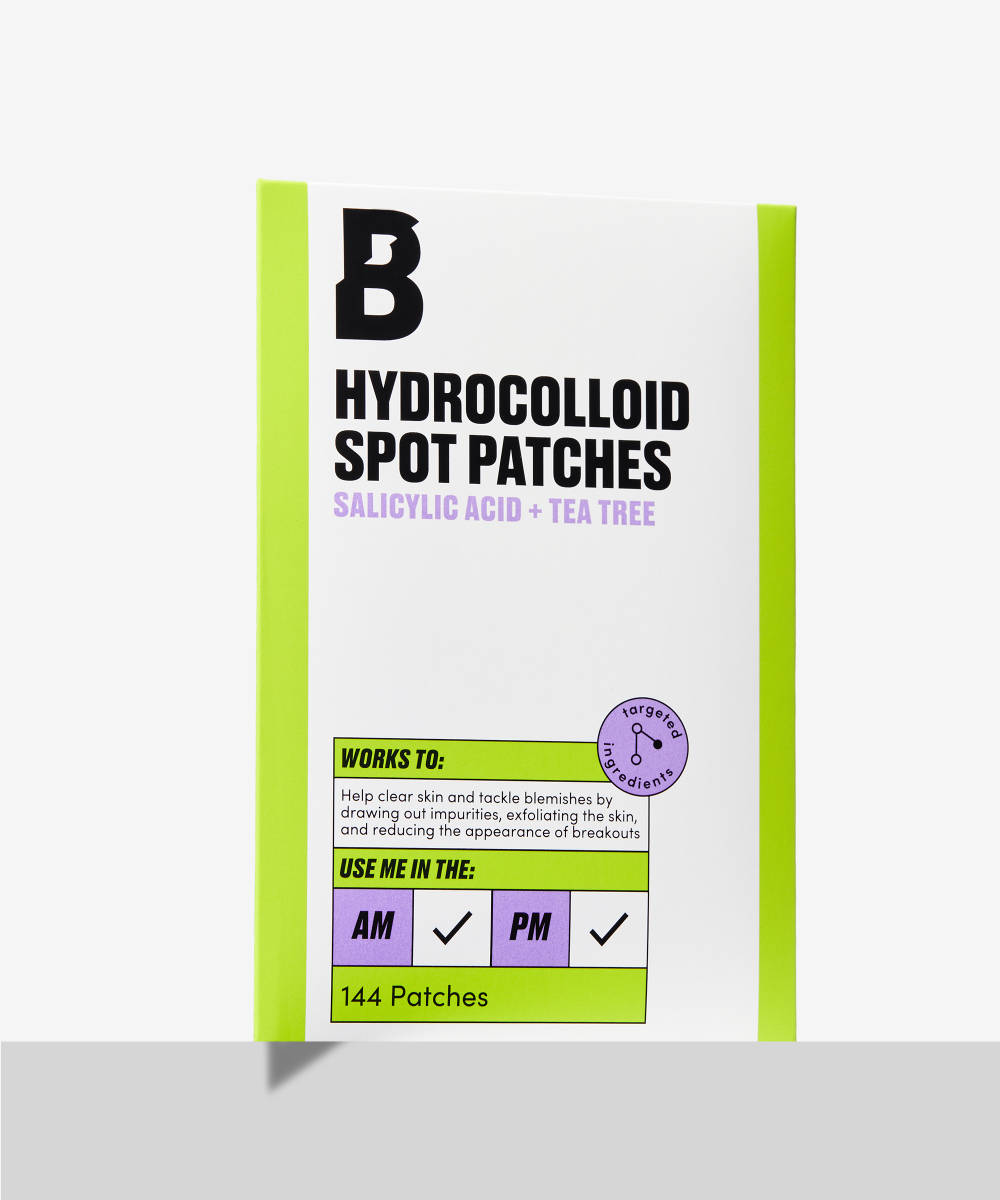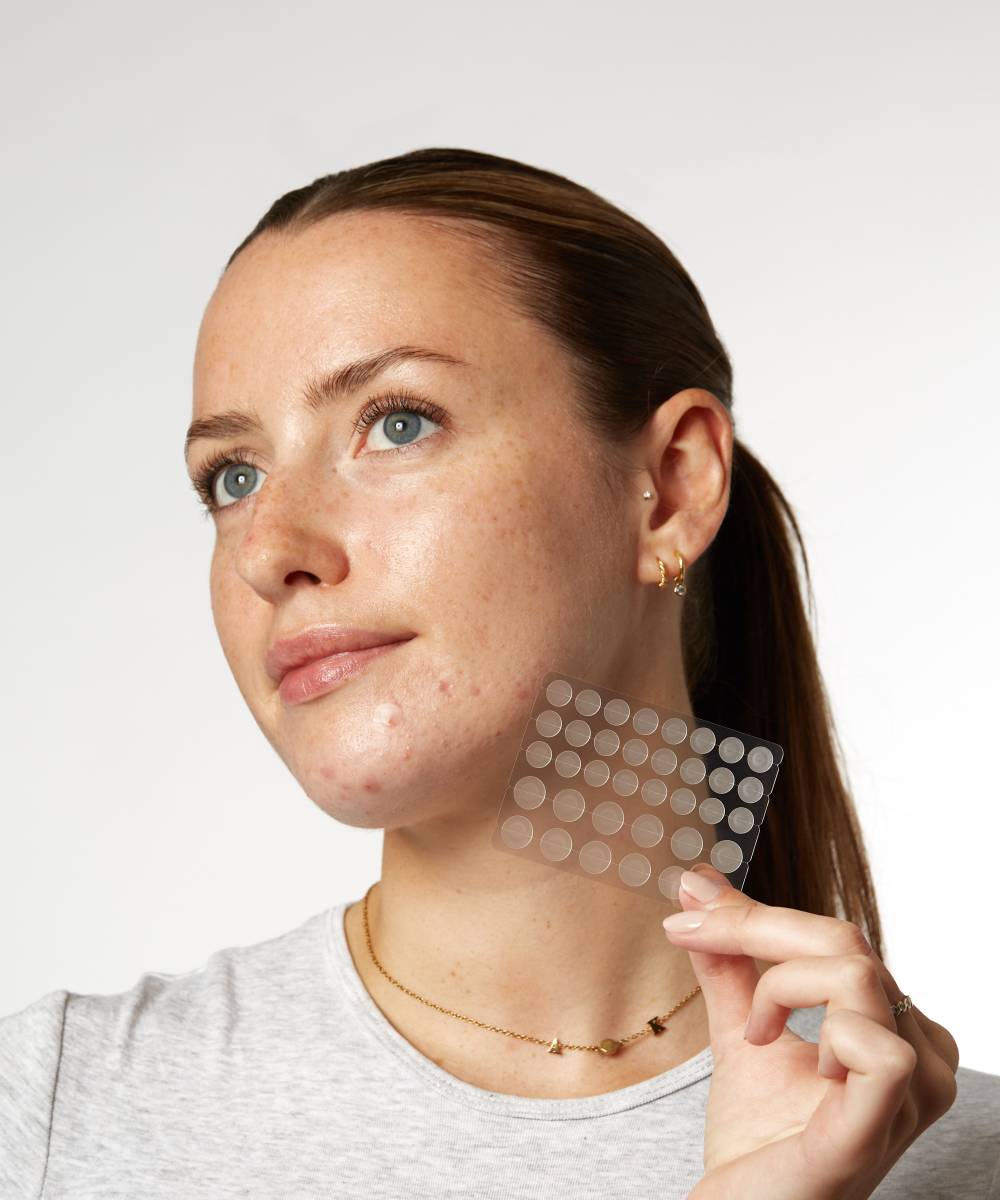If you’ve ever woken up to an almighty spot that needs to evacuate your face immediately, you’re probably in cahoots with hydrocolloid already. A hero feature in most spot patches and a term on most skincare obsessives’ lips, it works to reduce the appearance of breakouts in just a matter of hours.
If you’re wondering exactly how it does it, and why exactly those hydrocolloid spot patches turn white, you’re in the right place. Read on to find out why hydrocolloid is the go-to spot slayer for both day and night.
1. What is hydrocolloid?
If you’ve already heard of hydrocolloid, it’s probably in relation to spot patches. Hydrocolloid is essentially a type of substance that creates a gel when mixed with water, making it the perfect formula and consistency for spot patches.
2. What does hydrocolloid do?
Not only is hydrocolloid a skincare favourite, but it’s also used in a lot of medical products to treat and protect wounds. This is because it draws out and absorbs fluids to help with the healing process.
And that’s exactly what it does for spots. It extracts fluid from breakouts to draw out impurities like sebum and bacteria, whilst also reducing inflammation and flattening spots. Creating a protective seal over breakouts, it also helps to protect spots and shield them from external stressors and makeup.
3. Is hydrocolloid the same as salicylic acid?
Hydrocolloid works by creating a protective barrier over spots as well as drawing out fluid and impurities. Whereas salicylic acid exfoliates and decongests pores whilst also reducing the appearance of breakouts. The two work hand in hand, which is why our By BEAUTY BAY Hydrocolloid Spot Patches are formulated with both.
4. Do hydrocolloid spot patches work?
Everyone’s skin is different but generally, yes, hydrocolloid spot patches do work. Some have been proven to clinically reduce breakouts in just four speedy hours. But as they’re safe and comfortable to leave on overnight, you can easily give those more stubborn spots a better chance at healing too.
5. Does hydrocolloid shrink pimples?
As hydrocolloid spot patches draw out fluid, like sebum, they can shrink and reduce the appearance of breakouts. So once they’re removed, you should see a smaller spot that’s much less irritated and inflamed. They also flatten spots, making them much less visible with or without makeup.
6. Why do hydrocolloid patches turn white?
If your hydrocolloid spot patch turns white, this is a result of the gel drawing out and absorbing the fluid inside your spot. It might end up looking like a white bubble, which is the desired result – trust us.
@beautybay Clearer skin is at your fingertips ☝️✨ Take back control of your breakouts with the By BEAUTY BAY Hydrocolloid Spot Patches, designed to tackle blemishes 👊 Now reformulated and supercharged, the patches you know and love leave you with even better results besties! 🎥: @ugcwithsummer #SpotPatches #Skincare #AcneProneSkin #ByBEAUTYBAY ♬ original sound – BEAUTY BAY
8. How long do you leave hydrocolloid on for?
There’s no rule for how long you can wear a hydrocolloid spot patch for, but we recommend removing it (and replacing it if needed) once it turns white. If they get wet they can turn sticky, so we also recommend swapping yours out to give your spot the best chance at healing.
Depending on the size of the spot, you might see an improved appearance after just a couple of hours. So if your breakout appears smaller and less inflamed once your spot patch is removed, you shouldn’t have to apply another. But if you can see there’s still fluid inside your spot, you might want to apply another patch.



